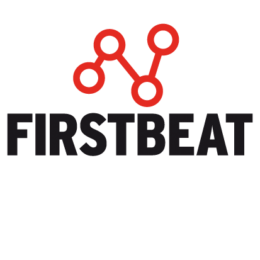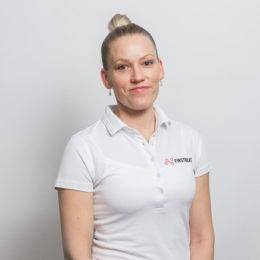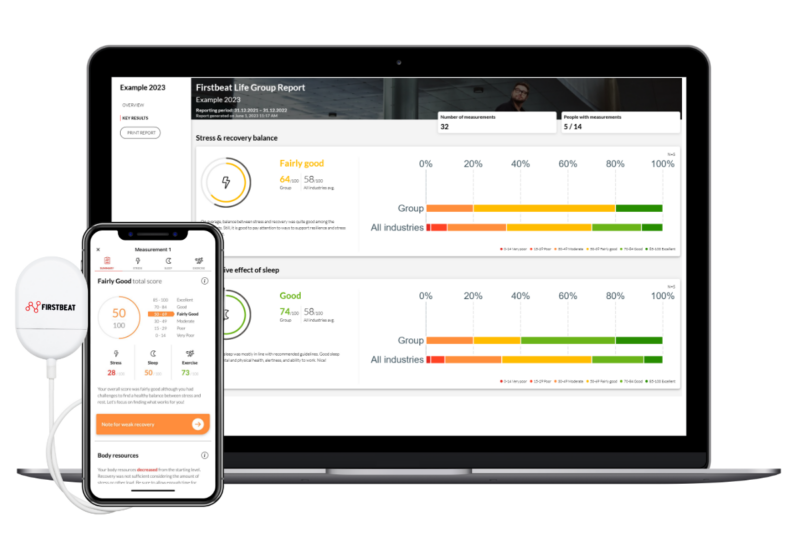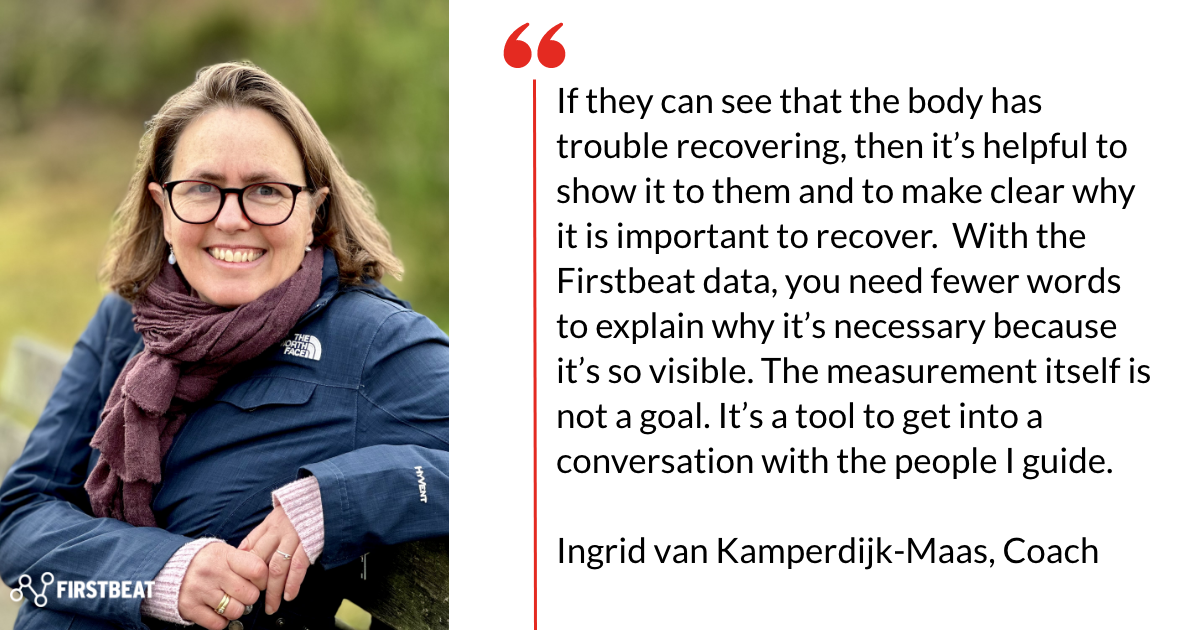
Ingrid van Kamperdijk-Maas is a Netherlands-based coach specializing in working with employees placed on long-term sick leave caused by stress and burnout. Ingrid helps her clients to successfully reintegrate into the workplace, and Firstbeat Life is one of the tools she uses to help people.
In this article, Ingrid explains how and why she decided to use Firstbeat Life with her clients, the role it plays in working with burnout and stress-related issues, and the impact and difference it can make.
Ingrid’s Coaching Background and Approach
Despite both of Ingrid’s parents being psychotherapists, Ingrid decided to choose a different career path, studied economics, and worked in the banking sector for more than 10 years.
Fueled by a realization that her personal values diverged from her corporate environment, Ingrid confronted her own challenges in 2006 when she realized that her sick leave could be attributed to a lack of balance and work-related stress.
After working with a psychologist and a career coach herself, Ingrid decided to embark on a new coaching career, helping and guiding others with career guidance and work-life balance issues. Ingrid now specializes in working with clients who are placed on sick leave due to stress and burnout, with her personal experiences sparking a desire to help others in similar situations. For Ingrid, career and work-life balance are interconnected. She says:
“I think when you guide people on a career level and there is a burnout or balance-related issue underneath it, it can also work the other way around. When you guide people with work-life balance issues, a lot of time there are also career questions that need answering. So I think they’re related in a lot of ways, I don’t see them as two different subjects. They belong together.”
The Challenge of ‘Work Hard, Play Hard’ Environments
Ingrid typically works with highly-educated professionals, from their early twenties to fifties. Many of them are in different phases of their career and life, for example, some are new graduates just starting out in the workplace, whilst others may be trying to combine starting a family with their career or taking care of elderly parents.
Many organizations Ingrid works with are IT companies or big corporations with international working environments and lots of expats on staff. Inside these companies, there is often a ‘work hard, play hard’ culture, which can make for a toxic combination. Ingrid explains, “They like to perform well, give the best they can, are smart, and want to be challenged. But that doesn’t mean that they know how to listen to their feelings, their head takes over and they just push themselves to work too hard.”
Visible Insights – Firstbeat as a Tool and Conversation Catalyst
Ingrid prefers to work with each client on an individual basis, not for a predetermined fixed amount of time, but instead taking a personalized approach for as long as necessary, which can be anywhere from three to nine months, which includes a period of aftercare and relapse prevention.
Ingrid usually asks her clients to conduct a Firstbeat measurement when they begin working together. She explains, “First of all, I look more broadly at the situation they are in by conducting a extensive intake interview, and finding out what’s the situation, what are the physical and mental signals and complaints, what’s the support system, are there any worries, financial or otherwise? Have other interventions taken place or is someone still being treated elsewhere.
Ideally, we start a coaching trajectory with the Firstbeat measurement. If I think that they are ready for it and open to it, that measurement establishes the baseline. We can see what their recovery quality and quantity is. How is their lifestyle? The Firstbeat measurement itself helps to emphasize a focus on recovery or it can help people to realize they can trust their body more than they do.
When people go on sick leave, some of them are really overwhelmed and didn’t see it coming. So that can make them anxious. I see a lot of people are anxious or panicked by the situation in itself, so they need to gain trust in their bodies again and also learn to recover. Improving recovery is then the first step.
If they can see that the body has trouble recovering, then it’s helpful to show it to them and to make clear why it is important to recover. With the Firstbeat data, you need fewer words to explain why it’s necessary because it’s so visible. The measurement itself is not a goal. It’s a tool to get into a conversation with the people I guide.”
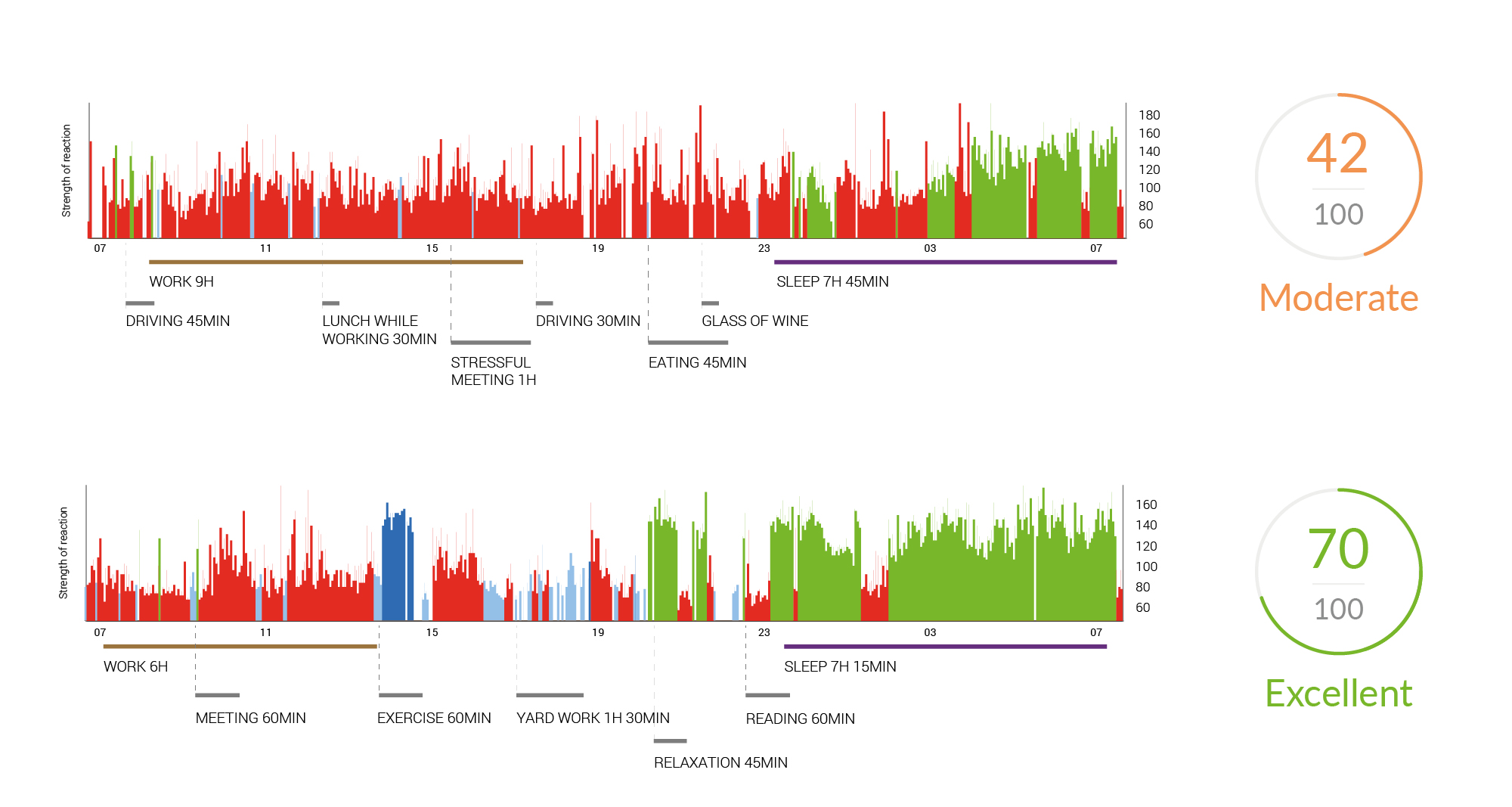
Different kinds of results from Firstbeat Life measurements.
Getting Started with Firstbeat
Ingrid has been familiar with Firstbeat since 2015 and took her time to become familiar with it, testing firstly on herself, before using it with clients. She says:
“Back in 2015, I was approached by a company in the Netherlands that was a provider of the Firstbeat devices. They also delivered the training and coaching from a physiological and health perspective which was interesting for me.
Before then, I was a coach who coached more on behavioral patterns and the topics that are familiar to a lot of coaches, such as career, work-life balance, and the physiological approach was new to me, and I liked that.
I learned to understand what is happening when you are in burnout and it’s not only behavior, it is also the autonomic system which is what the data helped me to understand – what is going on and how a behavior is related to the body’s reaction.
I also measured myself for the first time with Firstbeat which was a big shock too, as I’m not a champion myself in recovery, to be honest. It gave me an incentive, I thought, if this is what I see, what can I do to change it? This was at the end of 2016, and after that, I started using Firstbeat more and more.”
Taking A Customized Approach to Firstbeat Measurements
Depending on the individual, Ingrid encourages her clients to do more than one measurement with Firstbeat Life, with a longer initial measurement to get lots of data. She says:
“For the first one I try to do a measurement for around 5-7 days, and then I try to encourage clients to do another one after a month or so, before leaving them to themselves for a while. If I can see they’re interested in the data then I encourage them to do more, but I don’t want that to be the goal in itself.
Then it’s also interesting to do another measurement when they are almost fully reintegrated to see the difference and to make the reintegration as sustainable as it can be. So I have clients who do only one measurement and a lot of clients who do around six, and everything in between.”

Fig. 1. Workday includes some recovery (green moments), but stress level increases in the evening (high red bars) and stays elevated a large part of the sleep period. A coach can help the client explore what might have caused this and then make some adjustments.
Embracing Limits for Client Well-being
When it comes to burnout, there are warning signs and red flags to be mindful of. Ingrid explains, “Not being able to let things go, not being able to focus or concentrate, waking up in the morning still exhausted, becoming easily frustrated and upset, and sombreness could all be signs of burnout or stress. Another sign is not being able to see things from the right perspective anymore. I always end my guidance by asking people to write a relapse prevention plan, and I ask them to look back at what their red flags were. They all know. But they were just very good at not listening to them.”
Aside from the data insights, Ingrid has found Firstbeat helpful as a coach to help her realize when she needs to refer clients to other professionals with different expertise. For example, she says “It’s also helpful to me as a coach to realize my limits with what I can reach with a client. If the recovery is really low, then there might be other systems not working properly, and that has encouraged me to advise people to seek additional guidance from other disciplines. I realized that I can do a lot to help people but not always everything.”
Changing Biorhythms – One Client’s Journey Through Firstbeat Data
Ingrid recalls working with one client where the Firstbeat data made a big impact, “I had one client whom I worked with who was already in the process of reintegration at work after being on sick leave but was getting stuck, so I was asked to guide her during the final process.
The Firstbeat data showed that she slept from 2 AM to 7 or 8 AM, and before that, she did some reading and prior to that, some heavy exercise. During the day, she also showed recovery probably because she was exhausted. What triggered me was the biorhythm that seemed to have shifted, recovery at times you wouldn’t expect, combined with the struggles my client described.
But the interesting part is that without seeing this measurement data, I don’t think I would have realized what was going on so quickly, compared to when you only ask people verbally, what does your daily life look like, did you exercise, etc?
For this client, sleep was an issue. She thought that exercising in the evening would make her tired enough to go to sleep. She loved to read, so that also helped her to get a bit distracted. But it worked the other way around. After she had exercised, she tried to get to sleep by reading but she was still so active that she needed to go to bed later and later and her whole biorhythm was changed.
The problem was that she had a lot of issues that she worried about and that took over. So showing her this data and the fact that her body could recover, despite everything, was also a big relief to her. To be able to say to her, ‘Look your body can recover, the only one who is struggling is you by pushing yourself and by avoiding the things which need attention.’
That made her show some gratefulness to her own body and realize that she needed to take care of herself in a different way. Together we made a weekly schedule, allocating time for work, recovery, and also I asked her ‘What about time for worrying, when will you do that?’
When you avoid worrying, then it will come back when you don’t want it to happen. So it was important to take time to worry but to limit it. That helped her to realize that she had a body that could recover and understand that she could change things to improve it, and the funny thing is she worried less after that and her recovery improved quickly.
She also changed the time of day she exercised which helped the reintegration enormously. I do see a lot of people who change their biorhythm during sick leave. Or clients who think it’s good to stay in bed or to be on the couch all day because they’re tired. But that’s not true. It’s about being active and recovering in a good, balanced way.”
The State of Burnout in 2023
Ingrid believes that the pandemic has contributed to the rising number of burnout and stress-related cases she sees and that remote working has made it more difficult to see how our colleagues are doing.
“I do have more and more people who come to me, and I think the pandemic didn’t help, and an increase in working remotely doesn’t help. I think reintegration is also getting more complex. We used to advise people to go to the office for coffee but you can’t do that if no one’s there.
We have a social role to play in the workplace and people are withdrawing from the social part when they’re not feeling well. It’s easier to withdraw behind a screen compared to when you go to the office, so it’s not as easy to see how people are really doing.”
Looking to the Future
For Ingrid, ideally, in the future, she would like to use Firstbeat more in the prevention of burnout and stress, however for this to happen, companies and organizations still have a lot of work to do. Ingrid says:
“I would like to use Firstbeat more for prevention before people are put on sick leave, but for now I have a full practice of clients who are already on sick leave. I do think companies are taking more preventative measures and becoming more aware of the situation, but we have a long way to go. I would hope that I can be more visible in the prevention part of burnout, because then the process is much shorter, and people don’t fall as hard.”
If you’re a stress or burnout coach interested in learning more about Firstbeat Life into your coaching services then book a call with our team.
If you liked this article, you should subscribe to our newsletter.
You might also be interested in

Supporting Your Clients to Make the Most of Their Firstbeat Life Experience – Measure and Learn
To wear or not to wear…? Sensible use of wearable devices is an important consideration for coaches who want to utilize data to add depth to their programs and motivate…

This Reliable and Easy Way to Test Your Clients’ Fitness Level Is a Must-have for All Fitness Coaches
Whether it’s a new client or one that you have been working with for a while, it’s essential to get a real understanding of their fitness levels – particularly cardiovascular…

Get a Comprehensive View of Your Clients Load of Life – Tips to Upscale Your Coaching
Stress has a negative ring to it but in most cases, it’s not dangerous nor does it need to be eliminated from our lives. It helps us meet life’s challenges….
